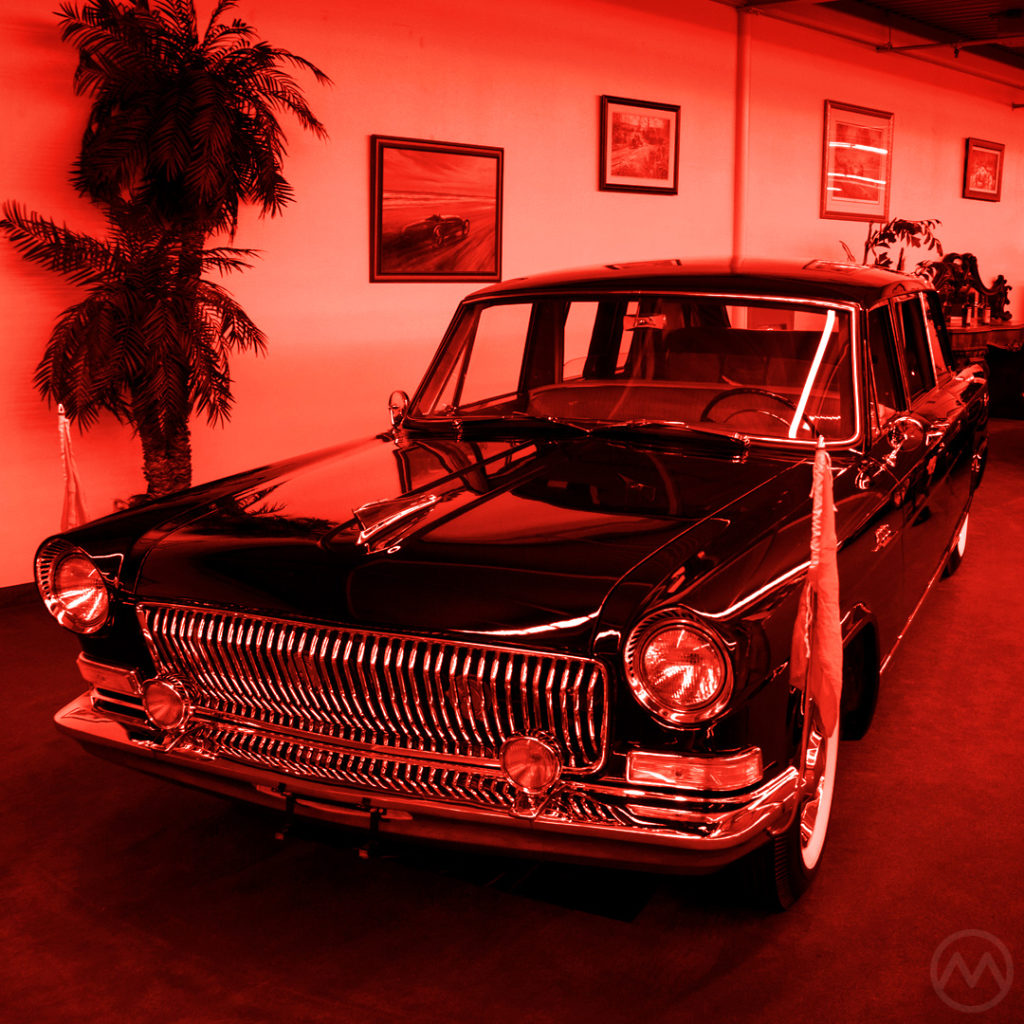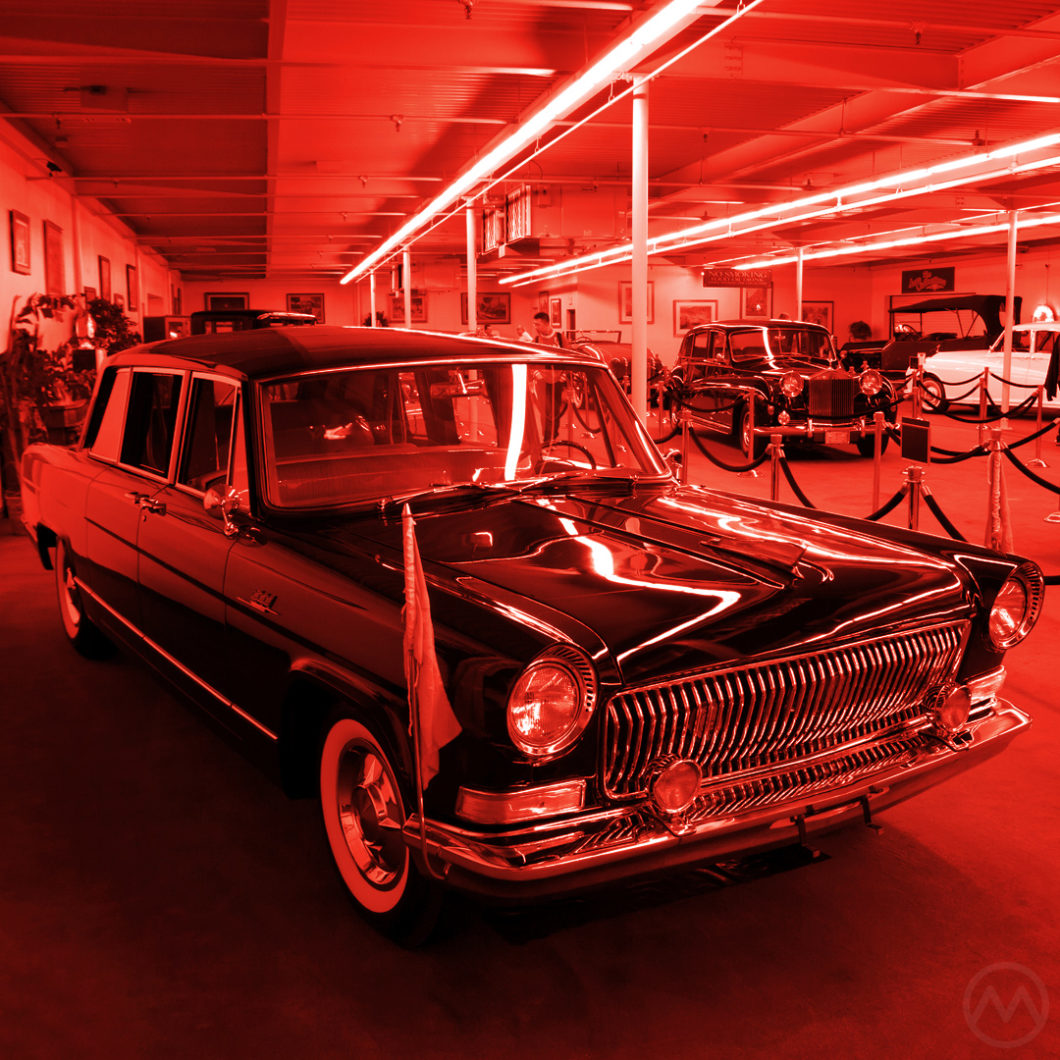A Chinese car for Chinese New Year – a 1974 Hongqi (pronounced “Hong-Ch’i,” meaning “Red Flag”) CA770.
The CA770 replaced the earlier CA72 in the mid-1960s (though it retained much of the older car) and was the de facto transport for high-ranking government officials, often provincial governors or military brass, in the PRC from then until the late 1980s.
Aside from the Shanghai SH760, it was one of the very few domestically-produced Chinese cars that the world was aware of, often playing a supporting role in diplomatic visits or parades. In size and purpose it mirrored other long-lived state limos like the Mercedes 600 and the Russian ZiL-114, though the ZiL was a closer analog. Unlike the 600 or Rolls-Royce Phantom VI, you couldn’t just go out and buy a CA770 if you had enough cash.
Although we hear all about Chinese cars now, the PRC produced hardly any cars in quantity for many years, making the surviving Hongqi and Shanghai cars quite prized at home and rare windows to the early Chinese industry.
The long period of instability in China from the late Qing era until the end of the Chinese Civil War largely prevented car production from taking root there as it did in other places. It’s important to note here that said Civil War did not formally end in 1949. However, that year the mainland was unified under the People’s Republic of China while the former Kuomintang Government moved to Taiwan. Hostilities largely ended after the Wanshan Archipelago campaign in the summer of 1950.
As a result, it wasn’t until the PRC’s first “five year plan” that the first steps toward car production actually began. In 1953, the “First Automobile Works” (FAW) was set up with Soviet help in Changchun, producing licensed Russian ZiS trucks from 1956. The PRC was (and is) a huge, primarily rural country, and trucks were the first priority.
China’s First Cars
The year 1958 saw a wide array of proposed new cars from various Chinese light industrial companies in cities all over the PRC – Tianjin, Shenyang, Chongqing, Kunming, etc. This included the first series-produced FAW car, the Simca-influenced Dongfeng CA71, and the VW-based Jinggangshan, which we covered last year.
The Sino-Soviet split caused much Russian manufacturing expertise to be withdrawn from China after 1957, so many of these cars never got beyond the prototype stage. Like the Jinggangshan, most would probably not have been possible to build in volume quantities anyway without proper component supply chains and even then there was also no ready market for them within China.
Even the “volume” CA71, itself ostensibly a state transport but too small to be a proper limo, saw fewer than 50 cars built, all built by hand.
But state officials did need domestic “official” vehicles. Mao Zedong was keen to prove China could build its own cars and boost industrial production to the levels seen in the United Kingdom by 1973. From 1955, he’d also expressed a desire to replace Soviet limos with Chinese ones.
From 1958-60, a trio of cars – the Beijing CB4, the Tianjin He-Ping (“Peace”) limo, and the Hongqi CA72 all vied to become China’s top state limousine. All three were reverse engineered to some degree from other cars – Chinese designers had few cars of their own to go on and no history of designing products like these.
Of these, the Hongqi was the most original. The CB4 was based on a 1956 Buick – reverse engineered and restyled with 1958 Studebaker-like front and rear treatments. The He-Ping was very much in the vein of the Russian GAZ M13 Chaika, itself sporting styling cribbed from the ‘55 Packards, but smaller. He-Ping also built a volume car prototype at the time based on the Toyopet Crown, but it didn’t last long.
The CA72 was based on 1955/56 Imperial architecture (the nearby Jilin University of Technology inexplicably had such a car on hand) and used a Chrysler-derived V8, but you’d never know by looking – it had an all-new body with relatively sober, restrained styling compared to the other two. It was the Government’s favorite to get the nod from an early stage and got the nod in 1959-60.
Hongqi CA770 & Beyond
The factory wasn’t entirely satisfied with the looks, so the car was redesigned into the lower, longer, seeker CA770 starting in 1963, again with Mopar LA V8 power, later standardized on the 340 V8.
These cars are extremely rare, so it’s hard to compare them directly in terms of what’s shared with Chryslers, but they diverged into their own product pretty quickly and continued to evolve over time. Supposedly, the CA770 was modeled after the updated frame and architecture of the early 1960s Imperial, itself descended from the “Forward Look” Chryslers of the mid-1950s.
State officials also used the SH760 (based on a Mercedes “Ponton”) produced in much greater numbers, but the CA770 was the top dog limo until the 1980s. Many versions were made – Landaulet “Inspection cars” for military parades, stretch limos, bulletproof sedans, even a trio of pickups.
Production trailed off in 1981, though a few were assembled as late as 1987. Deng Xiaoping can be seen riding a 1984 “inspection car” in videos from the PRC’s 35th Anniversary celebrations that year. Reportedly 874 were built.
In the 1980s, Hongqi began producing license-built Audi 100s, a car that was produced in much greater numbers, and also built a smaller rival to the SH760, though it did not get produced in quantity. More recently, the styling of the CA770 was used as the basis for the modern Hongqi L5.

In its day the CA770 was rarely seen outside China, although this particular CA770 supposedly once ferried around exiled Cambodian King Norodom Sihanouk during his time in China, and one of the cars was exported to Cambodia (but not this one, apparently). The first to reach U.S. shores was imported in 1988 by a U.S. military attaché, and supposedly five now live in North America.
This ‘74 CA770 was formerly at the Auto Collections at the Link Las Vegas, but is now whereabouts unknown.


The Hongqi CA770 absolutely never ever used a Chrysler 340 nor any other LA series engine. Before the move to a Ford 351W, it had a derivative of the Russian 5.56 L V8 as was used in the M13 Chaika and ZIL 111.